Last Updated on April 5, 2024
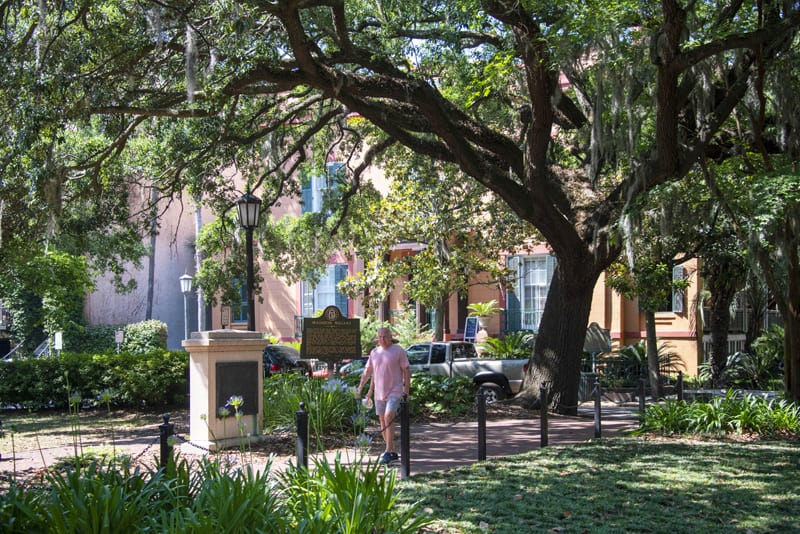
By Jim Ferri
If you’re looking for things to do in Savannah on a long weekend, you may find yourself overwhelmed. It just happened to my wife and me.
My wife and I had never spent much time in Savannah before. In fact, our previous visit was just a quick overnight.
That time we had decided to stop in Savannah to dine in a famous, much-hyped, top-rated restaurant. Unfortunately, we found both its service and food incredibly disappointing. And that’s being kind.
Incredibly, the following day we found a great restaurant in an old boarding house, of all places. It more than compensated for the debacle the previous evening. But still, we never saw the city.
However, now we planned on seeing the real Savannah on our first trip since the start of the pandemic. To cut to the chase…we fell in love with the city and its food.
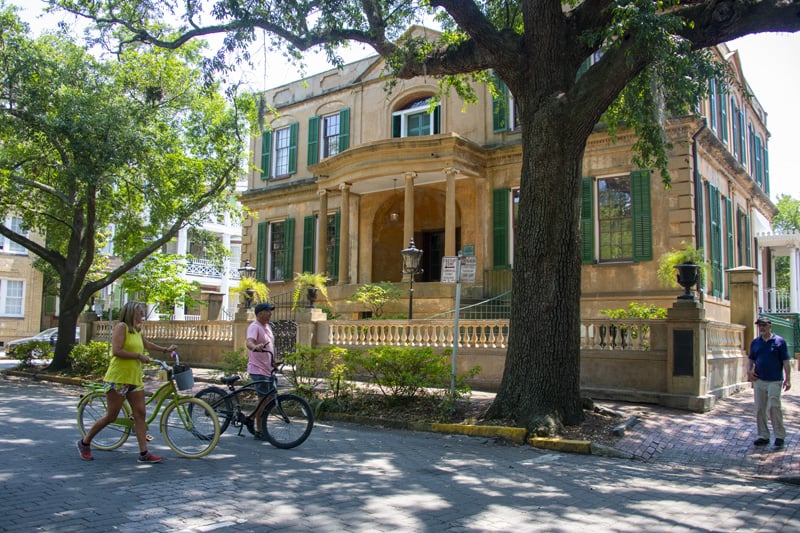
A Charming City
Savannah is a beautiful and charming city with many things to do. The Paris newspaper Le Monde once even called it “the most beautiful city in America.”
Whether you agree with Le Monde or not, you’ll likely find Savannah’s Historic District one of the most beautiful urban areas in the U.S., and it’s very walkable.
What provides a large dollop of charm are the District’s 22 neighborhood squares. They were planned by James Oglethorpe, the founder of Georgia, in the early 18th century. Little did Oglethorpe know then how they’d appear today, all spread out beneath ancient oaks draped with Spanish moss, surrounded by beautiful historical buildings.
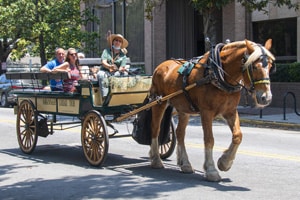
Spaced just a couple of blocks apart, each of these pocket-size squares remains unique, providing a different feel to each neighborhood. As we walked through them, we found they continually pushed the city higher and higher up the charm meter.
On the southernmost edge of General Oglethorpe’s city plan is Forsyth Park, a 30-acre green space in the middle of the city. Its focal point is its beautiful fountain, inspired by the Place de la Concorde in Paris.
A 15-minute walk north of Forsyth is Chippewa Square, famous for the Tom Hanks’ Forrest Gump bench scenes in the film Forrest Gump. The bench, however, has been removed from the park and placed in the Savannah History Museum.
I hate to see things like that happen. But it was probably a good thing to do in this case since I think tourist photographers likely cause a traffic nightmare in the area.
If you want to experience its charm firsthand, by all means, visit this beautiful city. The following are suggestions for what to do during a two- or three-day visit. Believe me, you’ll find plenty of things to do in Savannah, even if you don’t step outside the Historic District.
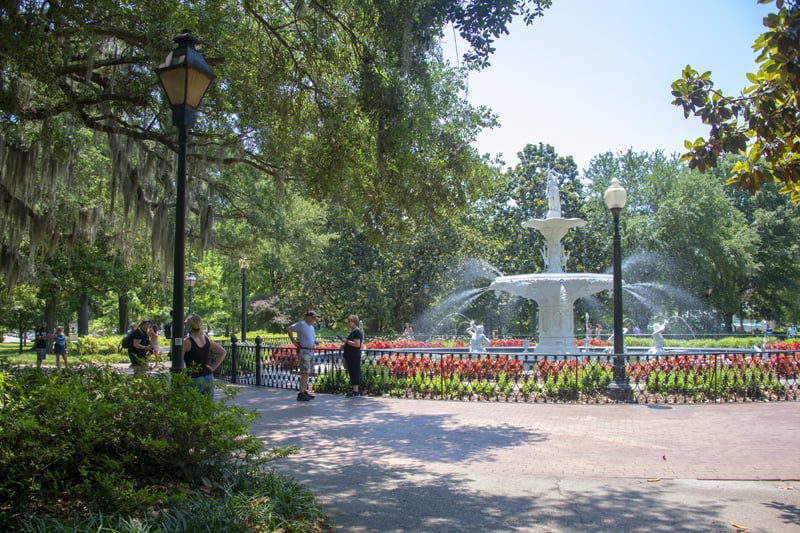
Finding A Guide
Savannah is a city of history, and its two-square-mile Historic District is one of the largest in the U.S. It’s so significant and historical – it encompasses the entire pre-Civil War area of the city – that I didn’t want to attempt to delve into its history without some guidance. The solution, obviously, was to find a good guide.
I did an online search and found Bonnie Terrell of Tours By Locals. She was just what my wife, Marjorie, and I wanted…born and raised in Savannah…a history major in college…loves her hometown…and, as she describes herself, “no costumes, no gimmicks, just one hell of a guide.”
I’d also add she has an exceptional talent for walking backward for hours as she explains the relevance of what you’re seeing.
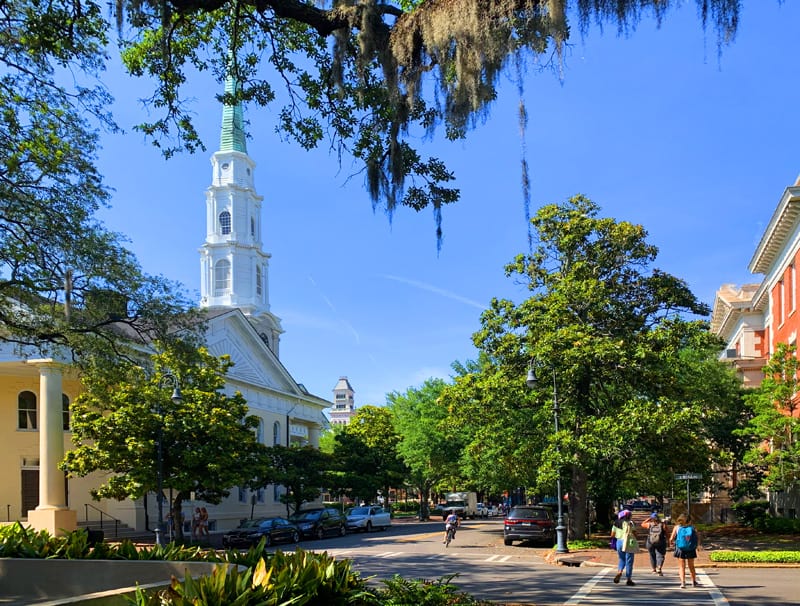
Seven Churches and “Jingle Bells”
Bonnie met us at our hotel, and we set off on our journey of discovery, heading first to the Catholic Cathedral of St. John the Baptist. As we passed the Colonial Park Cemetery on the way to St. John’s, Bonnie explained that Catholics were initially banned from settling in colonial Georgia.
“The English hated Catholics,” she explained, “and there was a military threat posed by Catholic Spain, which had settlements in nearby Florida. So, the Catholics were banned, but they were legal by 1780.”
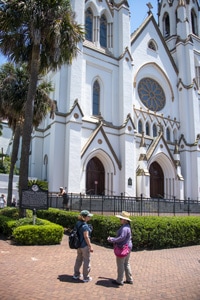
“We got to work on our Cathedral over here in 1873,” referring to St John’s, “and we finished it in 1876. Unfortunately, it burned down in 1898 but was rebuilt in 1900.”
“If this was a Cathedral in France…it would be stone with gargoyles everywhere. Even a bunch of saints carved out of the doorways. So, this is almost a minimalist version of French Gothic, built with brick covered with stucco with terracotta detailing,” she explained.
Most Popular Hotels in Savannah
Gargoyles or not, today it remains one of the focal points of the city.
There are seven churches in the District, including the Unitarian Universalist Church, known as the “Jingle Bells” church. The church’s organist and choir director, James Pierpont, originally a native of Massachusetts, wrote the song “One Horse Open Sleigh” there in 1852.
At least, that’s what Savannahians say. It’s worth noting, however, that there has been a long-standing dispute with the town of Medford, Massachusetts, which also claims the song was written there. In fact, through the years, there has been an exchange of strongly worded letters between the mayors of the two cities.
But Bonnie persisted. “James Pierpont was feeling a little homesick when he wrote the song, and there’s the marker,” she told us, pointing to the historical marker near the church.
She may be right. According to at least one reputable source, Pierpont wasn’t in Massachusetts when he wrote or copyrighted the song. In fact, he was in California.
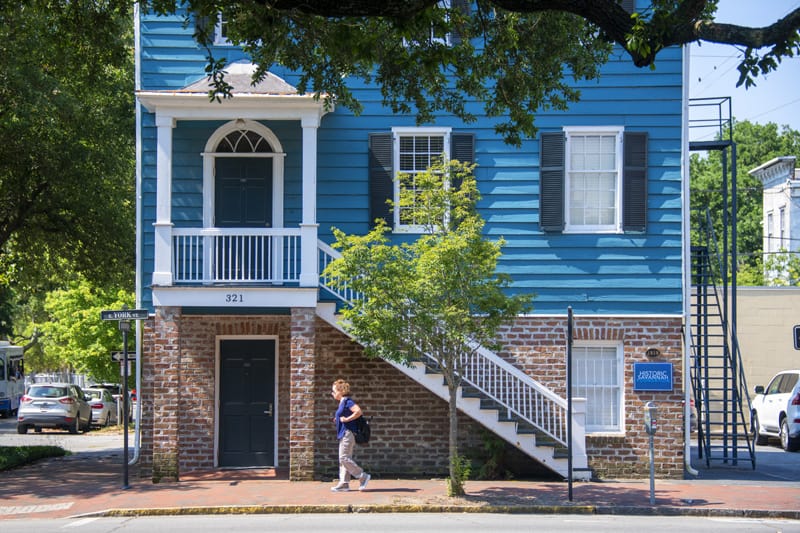
Don’t Miss Visiting Savannah’s Historical Houses
One of the most popular things to do in Savannah is to visit some of the city’s beautiful historical houses. There are scores of them, thanks to the efforts of the seven ladies who formed the Historic Savannah Foundation in 1955.
You’ll see that many house names are hyphenated since it’s customary in Savannah to use the name of the home’s original family in addition to its most prominent one.
It would take quite some time to see and tour all of them. However, below is my selection of those worth visiting on a two- or three-day visit to Savannah.
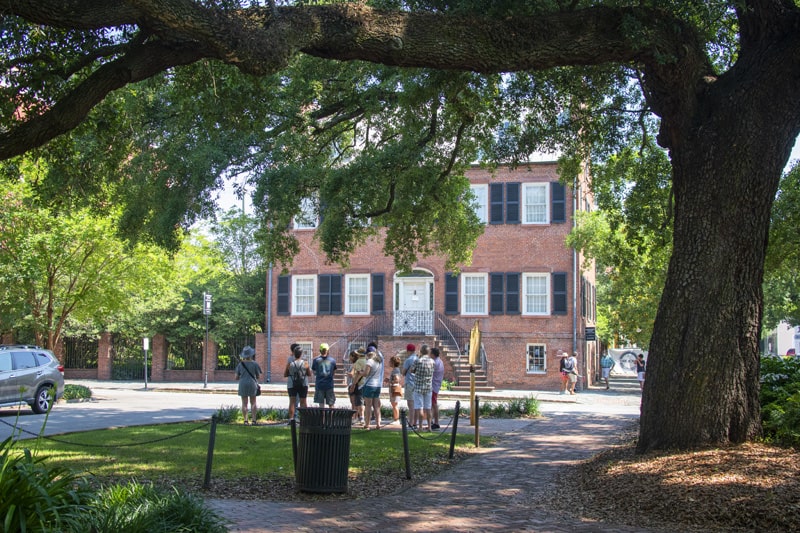
Davenport House
The historic Davenport House near Columbia Square was the first house saved from demolition by the Historic Savannah Foundation. The house was to be demolished to make room for a parking lot.
The Federal-style house – one of the oldest brick structures in the city – was built in the early 19th century by master builder Isaiah Davenport as a residence for his family. By the early 20th century, however, it had become a tenement housing up to 10 families. It is definitely worth visiting.
Davenport House
324 East State Street
Tel: (912) 236-8097
Open: Monday – Saturday 10am-4pm; Sunday 1-4pm
Admission: $10 adults, $5 children 6 -17, under 6 years free
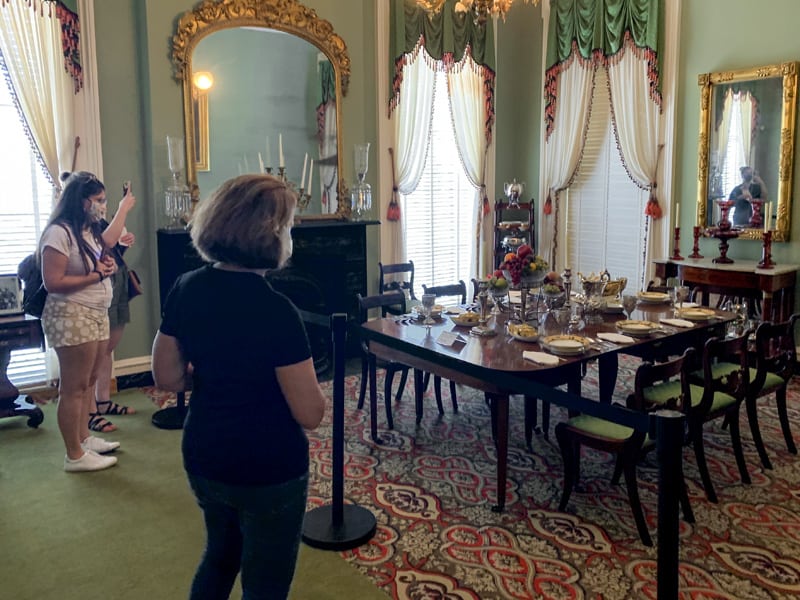
Don’t Miss the Andrew Low House Museum
This 1840s Greek and Italianate Revival-style home was built for Andrew Low. He was a young immigrant from Scotland who earned his wealth as a cotton broker. His son, William Mackay Low, who later inherited the house from his father, married Juliette Gordon.
Unfortunately, the marriage of William and Juliette was an unhappy one. In fact, they were in the process of a divorce when William died, leaving the bulk of his large estate to his mistress in Britain. However, he willed the Savanah home to Juliette, who lived in it for the next 22 years until her death.
One of the reasons the house is famous is that Juliette Gordon Low founded the Girl Scouts during the time after William’s death. In fact, the original carriage house of the home was the first headquarters of the Girl Scouts.
Andrew Low House Museum
329 Abercorn Street (On Lafayette Square)
Tel: (912) 233-6854
Open: Monday – Saturday 10am-4pm; Sunday noon-4pm
Admission: adults $12; students $10
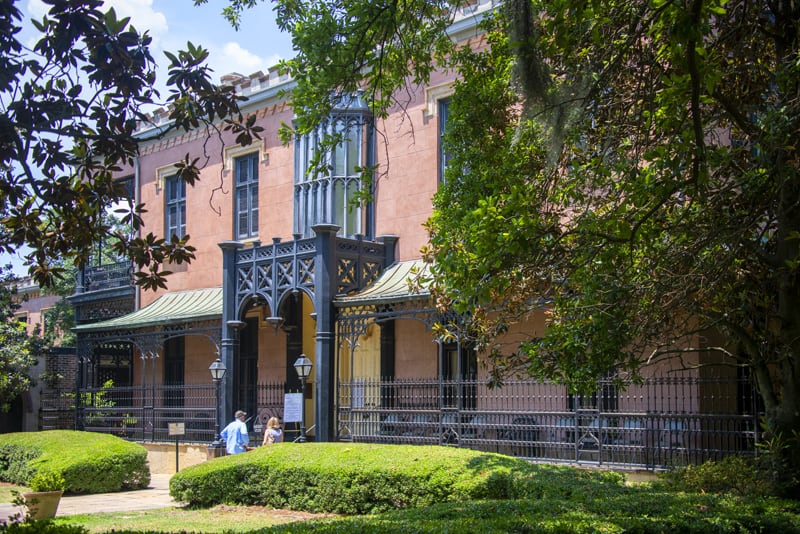
Green-Meldrim House
Built-in the 1850s, the Green-Meldrim House was built for Charles Green, a wealthy cotton merchant. It remains one of the best examples of Gothic Revival architecture in the South.
Green’s claim to fame occurred in December 1864 as the Union Army, led by General William Tecumseh Sherman, continued its infamous “March to the Sea.”
Knowing that Sherman had famously burned a good part of Atlanta to the ground, Savannah’s city fathers sought to avoid the same fate. Bonnie told us how they met Sherman on the outskirts of the city and “asked him very politely not to burn their city down if they surrendered.”
Interested in Savannah’s Historic District?
These hotels may interest you…
Green, however, hoping to avoid having his cotton and warehouses destroyed, went a step further. He offered his house to Sherman to use as his headquarters, which the general accepted. “Green was hoping if he was very nice to Sherman, Sherman would be nice to him and let him ship out his cotton and make some money,” said Bonnie. “Sherman, however, made a gift of the cotton to the U.S. Treasury.”
“But you don’t need to feel too sorry for Charles Green,” Bonnie confided. “He got a $198,000 check from the federal government 8 years later.”
Green-Meldrim House
14 West Macon Street (on Madison Square at the corner of Bull and Harris Streets)
Tel: (912)233-3845
Open: Tuesday, Thursday and Friday 10am-4pm; Saturday 10am-1pm
Admission: the suggested donation is $10.00 per adult and $5.00 for students.
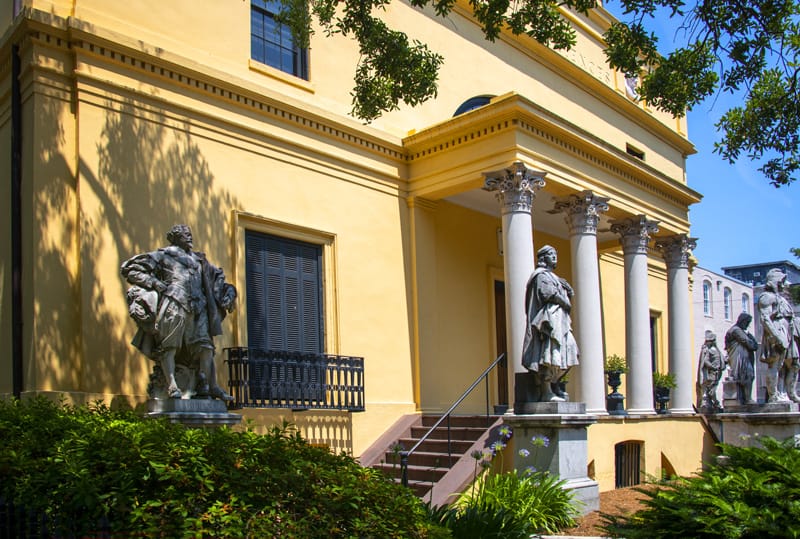
Telfair Museums
Another of the popular things to do in Savannah is to visit the Telfair museums. Telfair is a group of three museums: the Telfair Academy of Arts and Sciences, the Owens-Thomas House (both National Historic Landmark buildings), and the Jepson Center for the Arts. A single ticket provides admission to the three museums, each of which is architecturally significant.
The Telfair Academy, housed in a Regency-style mansion completed in the early 19th century, was built on the original site of the residence of the Royal Governors of Georgia. It was later bequeathed to the Georgia Historical Society to be used as a museum. The oldest public museum in the South, it is home to 19th- and 20th-century American and European art.
The Owens-Thomas House & Slave Quarters is one of the finest examples of English Regency architecture in the U.S. In addition, it is home to a decorative art collection, primarily furnishings of the Owens family, and other American and European objects of the mid-18th to mid 19th centuries.
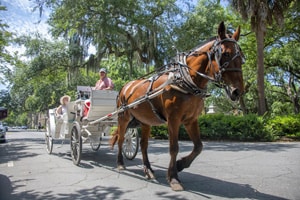
The Marquis de Lafayette, the wealthy Frenchmen and soldier who assisted America during the Revolutionary War, stayed in the Owens-Thomas House in 1825. During his visit, he addressed the people of Savannah from the balcony facing President Street.
The Jepson Center for the Arts, designed by architect Moshe Safdie, is home to contemporary art.
Telfair Academy
111Barnard Street
Tel: (912) 790-8800
All museums are open Sunday, and Monday 10am-5pm; Thursday-Saturday 10am-5pm
Admission for all museums is $20 per adult; $18 for seniors (65+) and active-duty military; $15 for students (13-25 years with I.D.); and $5 for children 6-12. One ticket provides entry to all three museums.
Owens-Thomas House
124 Abercorn Street
Tel: (912) 790-8889
www.telfair.org
Jepson Center
207 West York Street
Tel: (912) 790-8800
www.telfair.org
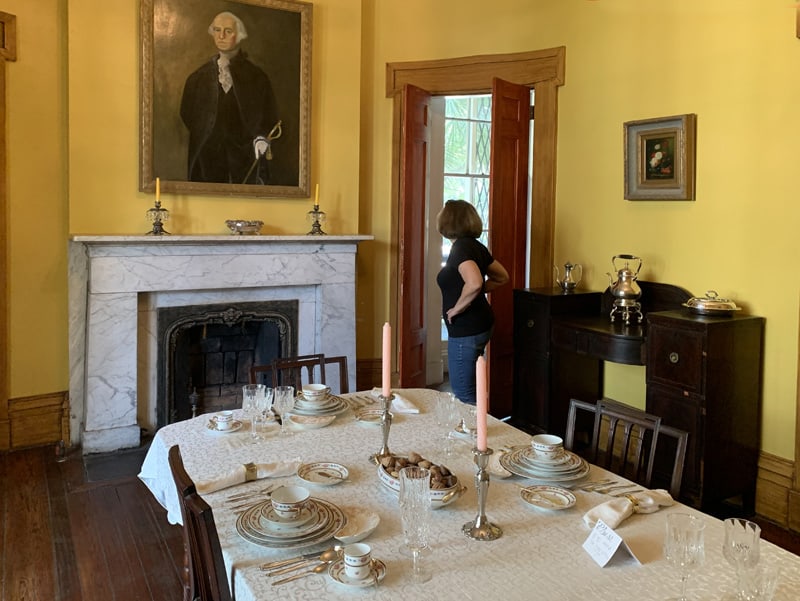
The Old Sorrel-Weed House
Built circa 1841, the Old Sorrel-Weed House is considered one of the best examples of Greek Revival-Regency architecture in the city. It’s also one of the largest houses in Savannah.
It was initially built for shipping merchant Francis Sorrel, a wealthy French Haitian merchant, who later sold it to Henry Weed. It was a social hot spot during Sorrel’s time as he entertained prominent social figures, including General Robert E. Lee.
The house is considered one of the haunted houses of Savannah and is popular on ghost tours of the city.
The Old Sorrel-Weed House
6 West Harris Street Savannah
Tel: (912) 257-2223
Open: daily 10am-11:30pm
Admission: adults and children (age 12+) $10; children (age 7-11) $5; under age 7 Free
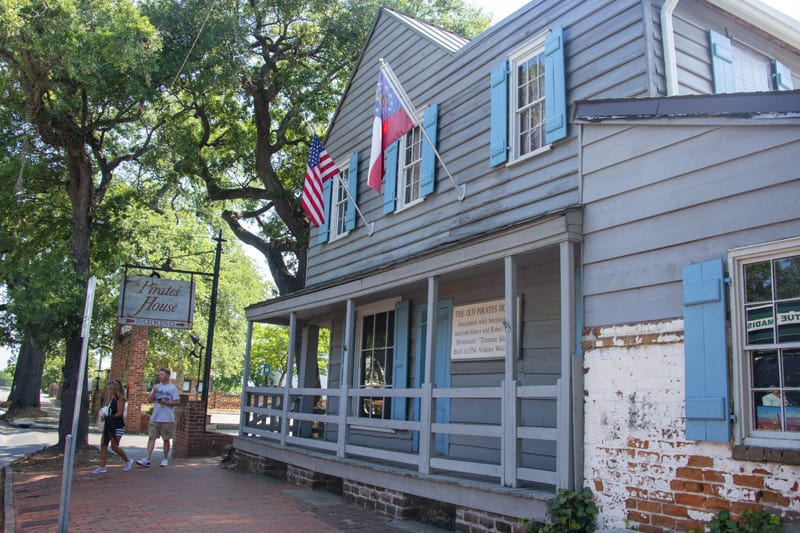
The Pirates’ House
Originally a seaman’s tavern in the time of sailing ships, the Pirates’ House is now a restaurant. Just a block from the Savannah River, it was a popular haunt of sailors and pirates in the late 1700s.
It’s said that an underground tunnel ran from the tavern down to the river. Through it, drunken men were shanghaied, taken down to ships on the river on which they later awoke as crew members. It’s said that Robert Louis Stevenson’s Treasure Island was inspired by the Pirates’ House.
The Pirates’ House
20 East Broad Street
Tel: (912) 233-5757
Opens at 11am daily
Admission: no admission charge
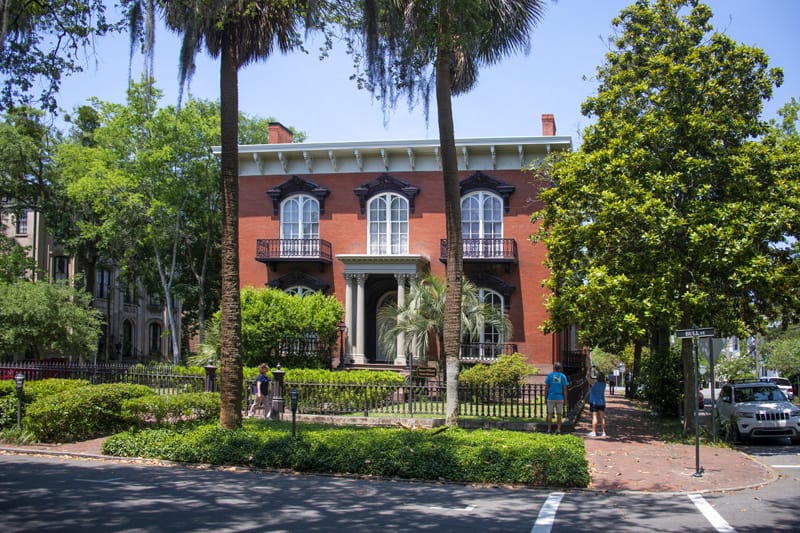
Mercer-Williams House
The Mercer-Williams House was designed for General Hugh Mercer, great-grandfather of four-time Academy-Award-winning songwriter Johnny Mercer. Unfortunately, construction of it was interrupted by the Civil War. Mercer never completed construction but sold the unfinished property. As a result, none of the Mercers ever lived in the house that bears their name.
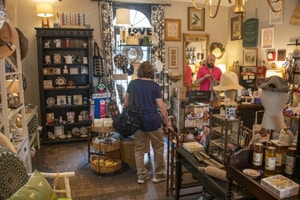
A Savannah preservationist and antique dealer, Jim Williams, bought the house in 1969 and was later accused of the murder of a male prostitute in its study. The events were publicized in the best-selling book and movie Midnight in the Garden of Good and Evil.
“In Savannah,” Bonnie told us, “when we talk about Midnight In the Garden of Good and Evil, we just call it “the book”…everyone knows what book you’re talking about.”
There’s no entry into the house from its front entrance. Instead, tickets and access to the house are located behind the main house in the gift shop and carriage house at 430 Whitaker Street.
Mercer-Williams House
429 Bull Street
Tel: (912) 236-6352
Admission: adults: $12.50; student and active military, with ID: $8.00
Open: Monday – Saturday 10:00am-5:00pm; Sunday 11:30am-4:45pm
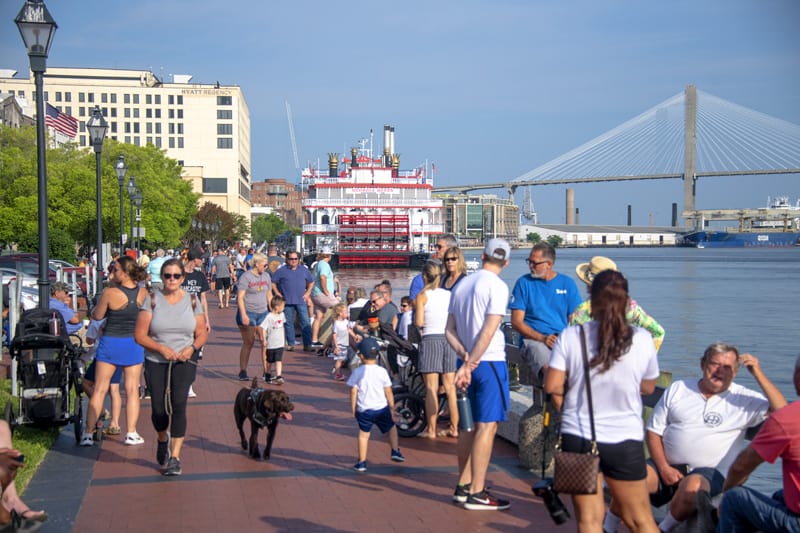
Enjoy City Market and the Riverfront
The old City Market, long a vibrant market where foodstuffs and other things were sold, was torn down in the mid-1950s to make room for a parking lot. Bonnie explained how it was a total disaster, hated by many of the city’s residents. It was an “awful looking” thing, said one guidebook. The demolition of the market was one of the catalysts for the formation of the Historic Savannah Foundation.
When the lot’s 50-year lease expired just a few years ago, the garage was quickly torn down and moved underground. Today the city continues its attempts to reinvigorate this area of the city and the adjacent riverfront.
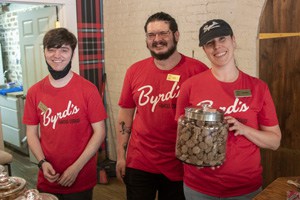
Take a walk around the “new” City Market and enjoy the shops, pubs, and restaurants there. You’ll also see an interesting statue of favorite local boy Johnny Mercer, taking in the whole scene.
After you’ve had your fill of the new market, head down to the river.
The city has begun revitalizing this once drab industrial area, turning it into an entertainment district to lure travelers and locals. One large anchor is the luxury JW Marriott Plant Riverside hotel. And it’s been getting high marks from travelers.
A walk along the re-energized riverfront is one of the best things to do in Savannah. As you wander, get a drink, have a bite to eat, do some shopping, admire the paddle wheelers. You can also hop aboard one of the Savannah Belles Ferries for a free scenic ride on the Savanna River.
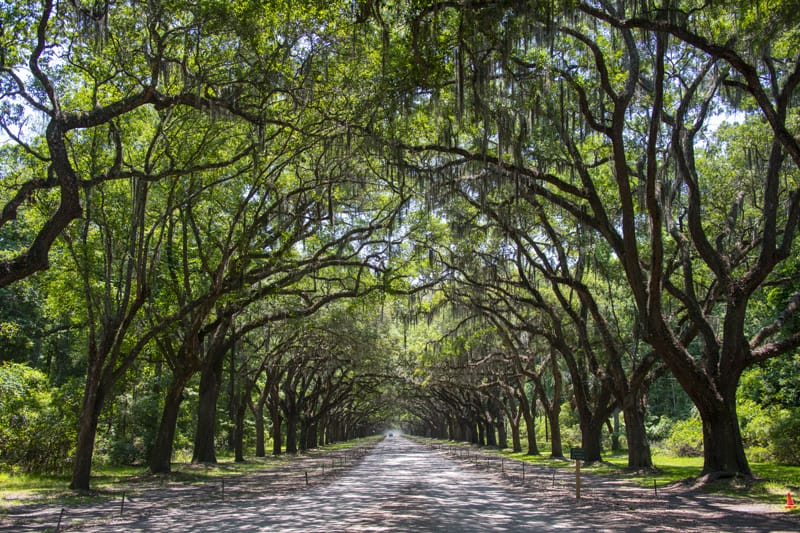
Get Out of Town
If you have a car, you’ll find some exciting things to do within a half-hour drive from downtown Savannah.
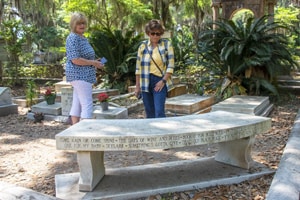
One place to visit is the beautiful Bonaventure Cemetery, made famous by the book and movie Midnight in the Garden of Good and Evil. We drove out to see the cemetery and the small gravesite of Johnny Mercer. There we found a bench noting his four Academy Awards and a list of his most famous songs. Pulitzer Prize-winning poet Conrad Aiken is also buried there.
Not far from the cemetery is Wormsloe Plantation, where you’ll drive almost two miles (3K) up a road beneath a canopy of ancient Spanish moss-draped oaks. It’s definitely a Gone With the Wind moment, and it will bring you to the ruins of an old plantation. At the end is the former home of Noble Jones, one of the first English settlers in Georgia in 1733.
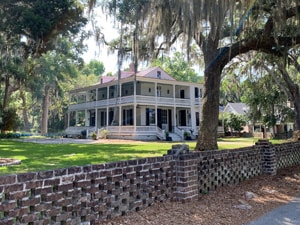
A bit further on is Isle of Hope, a historic summer retreat for wealthy Savannahians in the 1840s and ’50s, a place they used to escape the heat and mosquitoes of the city.
West of the city is the National Museum of the Mighty Eighth Air Force, with exhibits dedicated to the history of the Eighth Air Force of the United States Army Air Corps in the European Theater during World War II.
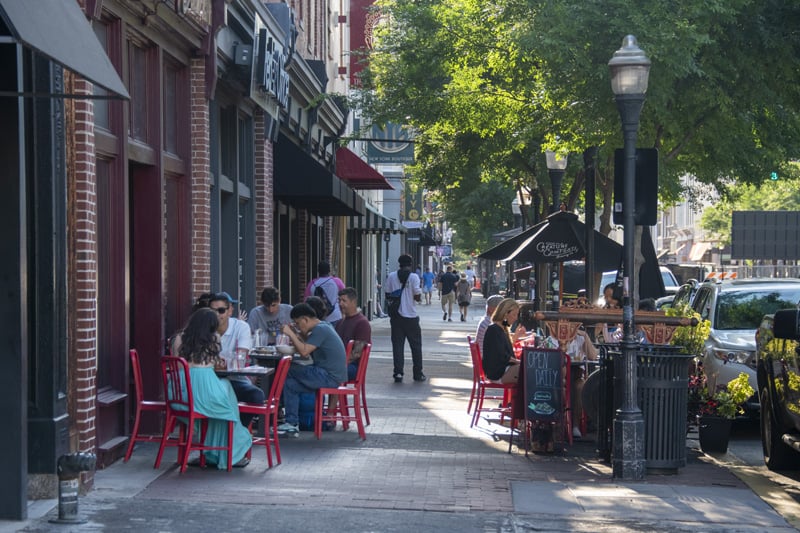
Restaurants and Eateries Discovered
Savannah is a city known for good food. And it is good! The problem is trying to get in the door if you don’t have a reservation.
We didn’t make any reservations in advance for our recent trip, so we encountered problems trying to weasel our way into some of the top spots in town. Our backup was the hotel restaurant, which, while good, didn’t satisfy our desire to see more of the city. The following is a shortlist of good restaurants we discovered.
Dinner: 45 Bistro
123 East Broughton Street
Tel: 912-234-3111
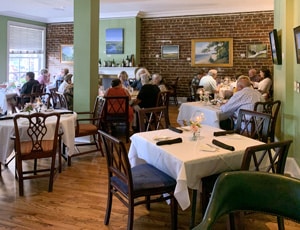
We had been calling upscale restaurants around the Historic District for dinner reservations late one afternoon. But we just kept hearing they were full for that evening. So, we quickly decided to make a shortlist, hop in the car, and head off looking for an open table.
Our first stop was 45 Bistro on East Broughton Street, and Marjorie went in and quickly discovered they had a free table. I quickly parked, and in we went. The dinner and service were superb. Appetizers of shrimp and grits, and an incredible beet salad. Entries of red snapper and lamb shank. A good crème brûlée for dessert. Good wines by the glass. A great meal.
Dinner: The Emporium Kitchen and Wine Market (Perry Lane Hotel)
256 East Perry Street
Tel: (912) 415.9000
This is the backup restaurant in our hotel. Although I don’t like to dine in a hotel restaurant more than once on a trip, we had to eat here twice during our three-night stay. The food was excellent, as was the service. Mussels, steak, salad, crème brûlée, duck confit, Brussel sprouts (a sweet and delicious side dish). The menu of wine by the glass is a bit limited, however.
Breakfast: J. Christopher’s
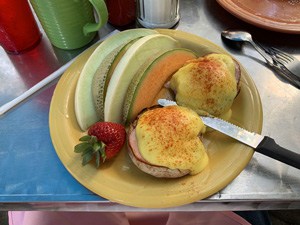
122 East Liberty
Tel: (912) 236-7494
This is a five-star, knock your socks off place for breakfast. They also serve lunch, but we were never in the area at the right time. It’s a Georgian chain open 7:00am – 2:00pm.
A couple sitting at an adjacent table in the Emporium Kitchen told us of this place around the corner. They raved about it as if it were the #1 spot for breakfast in the city. So we went and found that it was.
It’s in a converted garage with lots of tables inside and a good number out on the wide sidewalk, as well. Over-the-top breakfast two days in a row. Healthy or decadent, your choice.
I had Eggs Benedict twice; my wife Marjorie had a crepe with strawberries one morning, an egg burrito with black beans and avocado the next. She loved them both. No need to explain my thoughts about the Eggs Benedict since I ordered it twice…
Lunch: Gryphon Tea Room
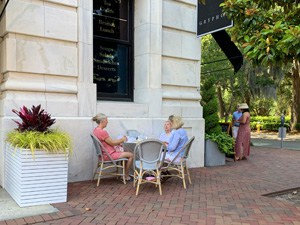
337 Bull Street
Tel: (912) 525-5880
Gryphon’s website says, “Gryphon is the premier dining destination of the Savannah College of Art and Design, carrying on the tradition of Savannah hospitality and delicious food.” And they’ve hit the mark.
Give them five stars for our delicious Mexicali Avocado Toast lunch and a Quiche with a mixed salad and fresh melon. It’s located at Bull and Charlton Streets in the ornate 1926 Scottish Rite building.
Dining at the Gryphon helps the students at the Savannah College of Art and Design with their education by allowing them to earn a living while learning. Great food, great ambiance. We’d definitely re-visit.
Go here and help a kid through college.
One Other Thing…
If you’re driving back home and heading south, you may also want to visit Georgia’s Golden Isles. They’re a wonderful place, only about 90 minutes south on I95. Well worth a visit.

Sounds like you had a wonderful walk around Savannah. I would also suggest a stop at Tybee Island for anyone wanting to relax at the beach.
Yes, we did have some wonderful walk(s) around Savannah. Unfortunately, we didn’t have the time to go to Tybee Island.
Nice piece on, Savanah. Been their just one time. Do the locals still like Sherman?
Didn’t hear a bad word about him Ed….